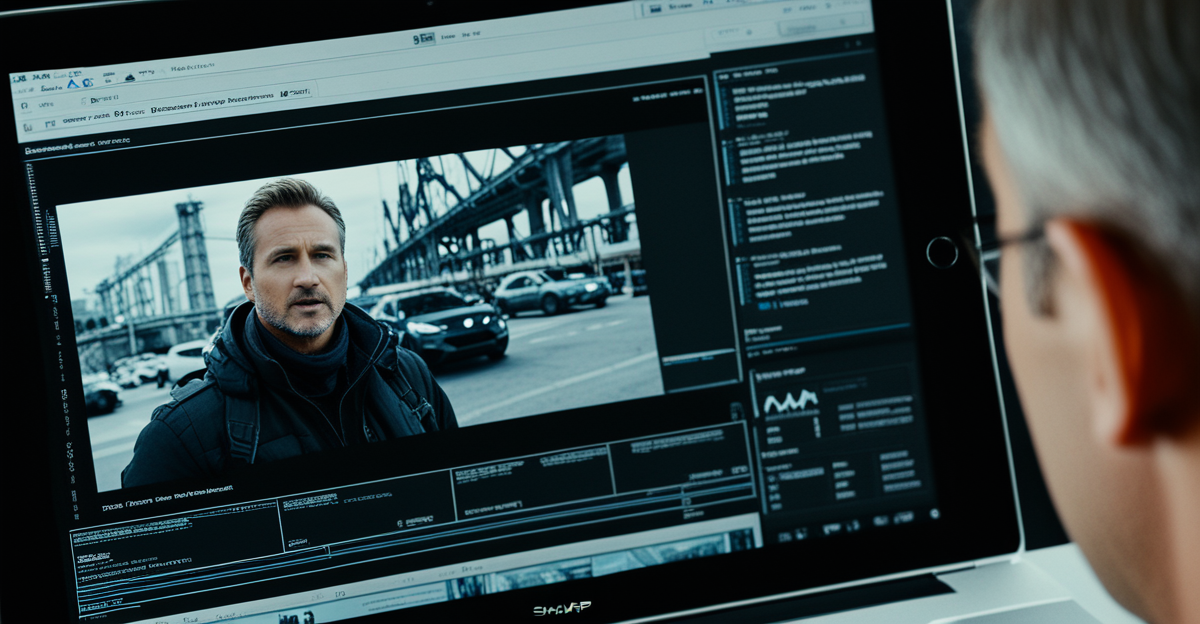Streamline your video creation with effective storyboarding

Effective storyboarding transforms video creation by providing a clear visual plan before filming begins. It organizes scenes, aligns teams, and saves time by identifying potential issues early. Whether using printable templates or cloud-based tools like StudioBinder, mastering storyboards streamlines production, enhances communication, and boosts creativity throughout your project. Discover how a structured approach can turn ideas into compelling visuals with less hassle.
Understanding Video Storyboards: What They Are and Why They Matter
A video storyboard is a graphic layout that sequences images or illustrations to pre-visualise scenes, plan storytelling, and communicate the creative vision to all team members. Using strategies like create engaging video storyboard, teams can efficiently map out narratives for films, TV, animation, commercials, or social media—long before cameras roll. This visual outline becomes the backbone of any project, reducing uncertainty while providing a clear reference point for each scene’s composition and purpose.
Sujet a lire : Are Biodegradable Drones the Next Step in Eco-Friendly Technology?
At its core, a storyboard breaks down the film, commercial, or animation into detailed panels—each frame representing a camera shot or key moment in the narrative. These panels showcase specific images, icons, or sketches, often paired with carefully written dialogue, action notes, or camera instructions. Essential details such as shot size, sequence order, and text annotations support everyone's understanding of what needs to be captured or animated. Storyboards are especially valuable for syncing the vision across directors, cinematographers, animators, or editors, and are highly actionable for both traditional and digital filmmaking.
Beyond basic scene frames, today’s storyboard templates enable flexible formats. Options include PDF and PSD downloads for hand-sketching, PowerPoint for collaborative pitching, and interactive digital solutions for real-time teamwork. Integrated labeling systems and space for scene notes ensure that every visual cue, sound, or movement gets its due attention. These elements streamline shooting schedules, prevent costly missteps during production, and support seamless feedback cycles—vital for any project with shifting requirements or team members working remotely.
A voir aussi : What’s the Future of Biofeedback Wearables in Managing Stress and Anxiety?
Whether for slow-paced documentaries, fast-turnaround social media videos, or intricate animations, selecting the right storyboard layout establishes a shared creative language. The main benefit remains constant: storyboards clarify ambitions, inspire alignment, and transform ideas into practical, shoot-ready plans—all through a concise, visual-first approach.
Step-by-Step Guide to Creating Effective Video Storyboards
Start the storyboard process for any video project by focusing on the essential stages: ideation, board setup, panel creation, annotation, and revision. Begin with your creative concept—clarifying your core message. Then, select from a wide range of storyboard templates for video projects, with options for printable storyboard formats like PDF or Word, and fully editable digital storyboard creators.
Next, layout your storyboard timeline and shot planning using either video storyboard formats and layouts—such as multi-panel templates, vertical or horizontal arrangements, or animation-specific structures. Carefully outline or sketch each shot, and remember, advanced drawing skills are unnecessary for effective storyboarding; photo stills or basic visuals suffice.
Incorporate video storyboard outline tips: label all panels with consistent project, scene, and frame identifiers. Add notes on camera directions, dialogue, or actions directly beneath the visuals to express intent clearly. Use color coding or symbols for quick reference across your storyboard timeline and shot planning.
Revisit and refine panels as the creative vision evolves, actively collaborating with your team through digital storyboard creators for rapid feedback. Adopting these step-by-step guide to video storyboarding principles ensures your video production visual planning remains focused and adaptable.
Tools, Templates, and Digital Solutions for Storyboarding
Software tools for video storyboarding transform complex creative ideas into organized visual sequences. Notable platforms like StudioBinder, Canva, and PlayPlay offer powerful solutions for video storyboard creation, providing everything from drag-and-drop interfaces to advanced storyboard AI tools and features. StudioBinder stands out with cloud-based digital storyboard template customization and intuitive shot management, streamlining team workflows. Canva’s storyboard apps for filmmakers bring real-time collaboration, a massive media library, and easy export options for various video storyboard formats and layouts.
Filmmakers and content creators benefit from a broad array of free and editable storyboard templates. These resources enable rapid visual planning, supporting everything from explainer video sequence design to music video visual planning techniques. Templates are available in Word, PDF, PowerPoint, and PSD formats. This flexibility helps with storyboard template downloads, making it easy to adapt layouts for animation storyboard structures or marketing video storyboard strategies.
Teams can leverage collaborative features within storyboard creator platforms. Live cloud editing, review cycles, and client sharing foster seamless communication. Digital storyboard creators with AI tools and features further enhance accuracy and productivity, accelerating the storyboard process for diverse video projects and genres.
Best Practices, Practical Examples, and Industry Insights
Begin with storyboard templates for video projects—these define the initial structure for many visual creators. A practical storyboard example typically merges image panels, dialogue, and camera cues into organized sequences. For explainer video sequence design, using editable storyboard templates or digital storyboard creators like PlayPlay or Canva helps streamline planning and fosters team alignment.
Storyboard examples for students and beginners demonstrate that hand-drawn sketches or collage cut-outs are just as valid as digital designs. When illustrating storyboard writing for video narratives, non-artists can source stills, use simple stick figures, or select free and editable storyboard templates. Shot descriptions and brief dialogue written under each frame clarify narrative flow, vital for explainer, marketing, or music video storyboard layouts.
Descriptive storyboarding techniques prioritize clarity and communication. Marking shot sizes, framing styles, and key scene actions within storyboard formats keeps everyone on track during pre-production visual outlines. Whether adapting storyboard layouts for music videos or instructional videos, outlining transitions and visual cues in advance reduces errors and miscommunications.
Real-world storyboard examples for video projects show that organized panels and annotated scripts help teams revise efficiently, especially when using collaborative platforms. This method enhances the entire process, from concept to shoot, for both classroom and industry settings.
